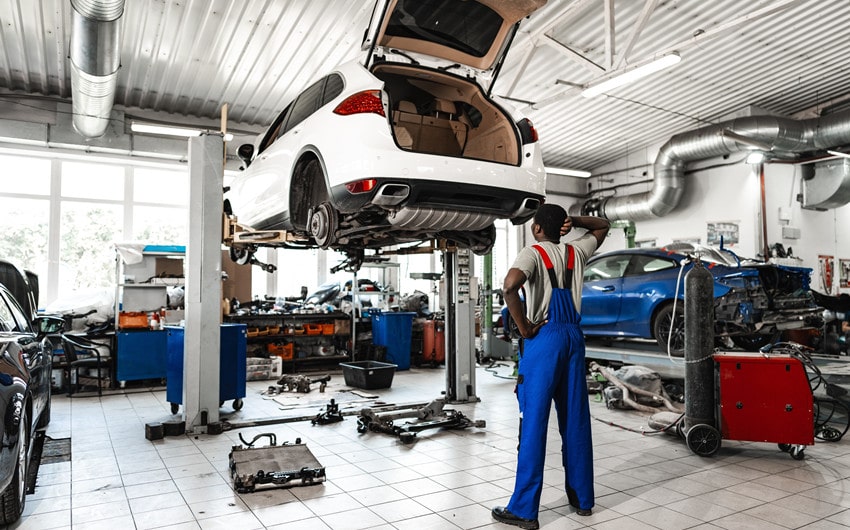When faced with car repairs, you may find yourself wondering what kind of parts you should use to get your vehicle running smoothly again. You’ll have to decide whether you prefer to stick with Original Equipment Manufacturer (OEM) or aftermarket parts. Understanding the difference between OEM and aftermarket parts allows you to make an informed choice that balances cost, quality, and the overall well-being of your vehicle.
Choosing the Right Parts Makes a Difference
The parts you choose for repairs can play a significant role in your car’s current and future performance, safety, and longevity. Selecting the proper parts for the situation at hand ensures your vehicle will continue to drive as intended and hold value over time. Whether your car was damaged in an accident caused by another driver or you simply need to replace a part that’s worn out over time, there are many factors to consider.
In the following sections, we dive into the specifics of OEM and aftermarket parts to help you make the best possible decision for your vehicle.
OEM Parts Are Tailored to Your Vehicle & High-Quality
OEM parts are manufactured by the company that originally built your car. Since they are made by the actual vehicle manufacturer, they are engineered and created specifically to fit with your vehicle, ensuring an ideal fit and performance. OEM parts are typically manufactured under strict quality control standards, so the parts you receive are consistently durable and reliable.
OEM parts have several undeniable advantages over their aftermarket counterparts. Firstly, they offer a level of quality assurance unmatched by many aftermarket manufacturers. Secondly, OEM parts should be completely compatible with your vehicle. You shouldn’t need to worry about incorrect measurements resulting in parts that don’t fit properly.
Finally, in some cases your car’s warranty may require you to use OEM parts for repairs and replacements. Check the terms of your warranty to see whether you need to use OEM parts for repairs to maintain your coverage.
While using OEM parts is oftentimes a good idea, there are some situations in which going this route can be especially advantageous. If your vehicle is still under warranty, you almost certainly want to use OEM parts to ensure you don’t accidentally void your coverage. Additionally, for critical components like the engine or transmission, the reliability and quality assurance offered by OEM parts may be a worthwhile investment.
Aftermarket Parts Are Affordable & Offer Countless Options
“Aftermarket parts” refers to a broad category of parts manufactured by companies other than your car’s original manufacturer. Aftermarket parts are meant to be compatible with a range of vehicle makes and models, offering you a wider selection to choose from and potentially lower costs as well.
The lower cost of aftermarket parts can be a significant advantage, especially for routine repairs or an older vehicle that you don’t want to invest significant money into. The wider availability of aftermarket parts is also convenient. If OEM parts are expensive or backlogged, it’s likely that you can get a comparable aftermarket part with relatively little hassle. In some cases, aftermarket parts may even offer performance enhancements, such as higher-performance brake pads or upgraded suspension components.
However, you should also consider the potential drawbacks of aftermarket parts before moving forward with a purchase. To start, aftermarket parts can vary significantly in quality. Reputable manufacturers may produce high-quality aftermarket parts, but others may not come even close to meeting the quality standards of traditional OEM parts.
The quality of parts used in repairs can significantly impact your vehicle’s performance and longevity. Particularly for critical vehicle components, it may be best to stick to OEM parts. In some specific cases, the use of aftermarket parts can void your vehicle’s warranty, especially if they cause additional problems due to incorrect installation.
Making the Best Decision for Your Vehicle
Several factors can help you choose between OEM and aftermarket parts. You should start by considering the cost of both options. OEM parts typically cost more, but you may find that the sticker price is offset by the reliability and warranty protection of these higher-quality replacements. The age and condition of your vehicle is also worth considering. For older cars with lower repair costs, aftermarket parts may be entirely suitable. If your car is under warranty or undergoing critical repairs, OEM parts might be the right decision.
Availability and convenience may also play a role in your decision. OEM parts are sometimes only available for purchase through a dealership, which can lead to delays if you need a part that is rare or out of stock locally. In such a case, you may have an easier time finding a comparable aftermarket part. You should be certain to find a reputable seller if you do decide to go the route of aftermarket parts.
Before making your mind up, you also ought to consider how your parts choice might impact your warranty and insurance coverage. Check your warranty manual and insurance policy to make sure your decision will not adversely impact future repair requests.







